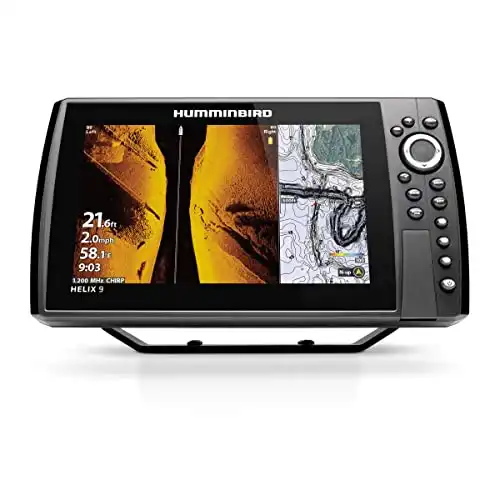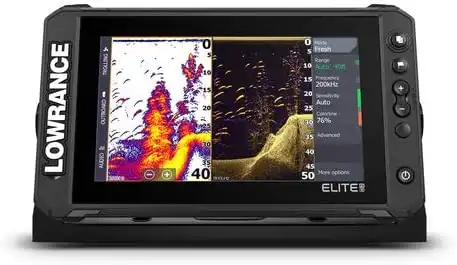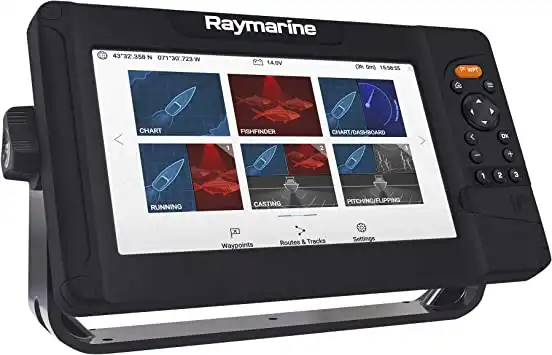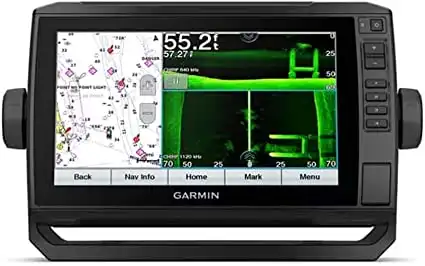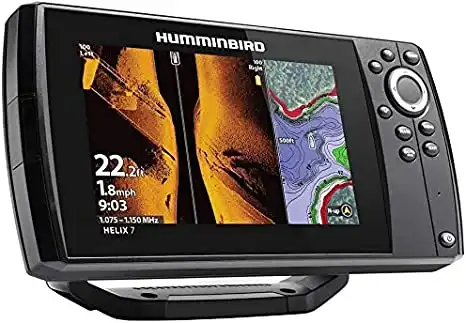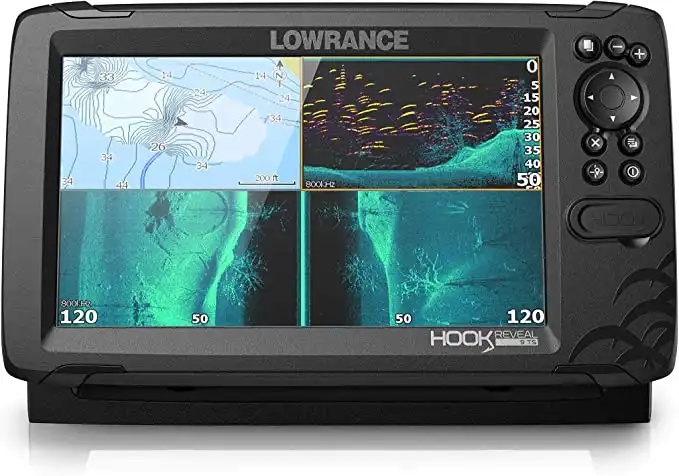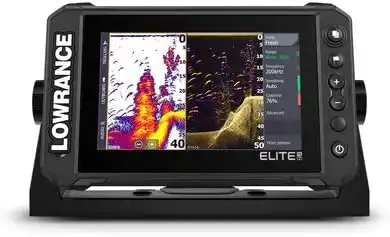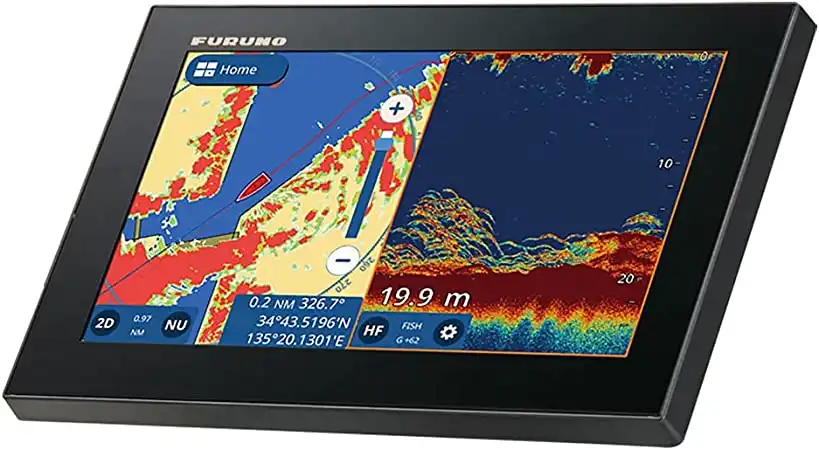There is an old saying that you can’t win the Kentucky Derby with a plow horse. While the plow horse may be perfect for their role, with power, stamina, and the skill to do hard work all day, they just don’t have the speed, style, and pizzazz of a thoroughbred racing horse.
That’s the difference with the Humminbird Helix 9 when compared to other fish finders. Make no mistake, the Humminbird Helix 9 is a racehorse. Equipped with the latest technology, advanced sonar, and more powerful than a locomotive, (wait, that’s for Superman) the Helix 9 is a full-featured monster of a fish finder.
We will look at the wide arrange of features available in this Humminbird Helix 9 review.
Stepping Up to a Whole New World of Technology
If you’re familiar with fish finders, their functions, and the basics of using one, you’re going to really enjoy moving up technologically to the Humminbird Helix 9. This device comes with all the standard features available in basic fish finders, then ups the ante with breakthrough technology that creates an entirely new viewing experience.
The full name of the Humminbird Helix 9, the Helix 9 CHIRP MEGA DI GPS G2N should give you an idea of what’s packed inside. However, names that long don’t fit on product packaging, and no angler would ever utter the full phrase, for our purposes it will simply be the Helix 9.
The 9 in the name refers to the screen size, a substantial nine-inch diagonal viewing area containing a high definition 800×480 pixel color TFT display.
While the display is the human interface with this amazing sound converting technology, it is the features connecting the device that makes the difference.
Features of the Humminbird Helix 9
The heart of any fish finder is the transducer. This one works with four sonar frequencies beginning at 200 kHz, then moving up to 455 kHz, 800 kHz, and an extremely powerful 1.2 MHz frequency.
This enables the Humminbird Helix 9 to produce clear images from depths to 3,500 feet. You’re not likely to find freshwater that deep since Great Slave Lake in the Northwest Territories of Canada is the deepest in North America at 2,020 feet.
In offshore, saltwater fishing, the maximum depth is much less, but you’re not going to catch much fish off the continental shelf beyond the standard 600 feet (0.18 km) depth that defines it.
Depth of view is an important feature, requiring a lot of power to punch sound waves that are deep through water. The Helix 9 has a 1,000-watt power output, it bumps to a peak of 8,000 watts.
A built-in temperature sensor creates a temperature graph on the display.
Inexperienced fish finder users will often troll around blindly just looking for fish to appear on the screen. Experienced anglers know that certain species inhabit specific temperature bands of water.
Trout like colder water, bass warmer, and walleye in perch something in between. Finding that warm 70 to 80-degree water will lead you to the largemouth bass, no matter the season. Look for 55 to 60-degree water and your odds of landing a big lake trout or a hard-fighting, tail-dancing rainbow increase dramatically.
There are more ways to use a fish finder than simply watching the screen and waiting to see a fish swim by.
Advanced Features
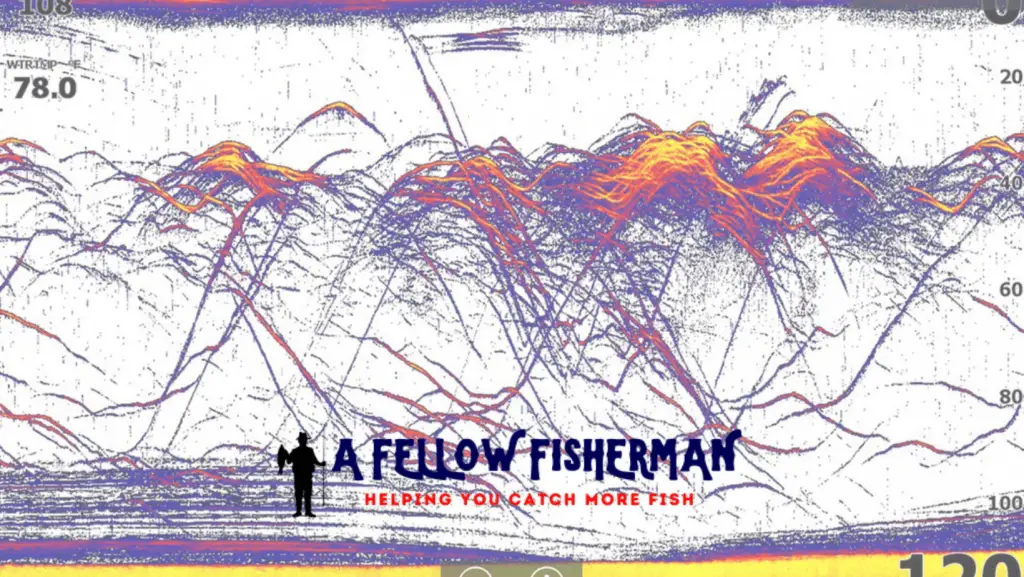
Radar
You can’t help not to make comparisons between the Helix 9 and military applications from World War II. This unit doesn’t have just sonar, but radar as well.
Unless you’re after flying fish, radar doesn’t seem to have any use as a fish finder, but finding fish is one thing, finding your way back home on a dark moonless night or in heavy fog is another.
The radar reaches the horizon, producing images of anything else on the water, or close above it. That means a range of almost 25 miles (ca. 40 km).
It’s not a feature you’ll need very often on the smaller lakes and reservoirs most people fish, but it can be a welcome feature if you’re fishing offshore in an area with larger fishing boats or even commercial shipping. Anyone who has ever ridden the wake of a big ship in a fishing boat doesn’t relish reliving that experience.
If a fog bank rolls in, and you’re fishing in a hot spot on a lake, surrounded by other boats, this feature can keep you from blindly crashing into one of your fellow anglers.
SwitchFire
Humminbird created the SwitchFire sonar to allow customized sonar information to be displayed on your screen. Setting the display to Clear Mode reduces screen clutter, allowing clearing images in murky water or water that is choppy and filled with sediment.
If the water is clear and calm, switch the screen to Max Mode and you have high definition images of the underwater structure and images of fish so clear you can often identify species by their outline and markings. The imagery is very impressive in Max Mode.
SmartStrike
This feature is popular with many novice anglers. SmartStrike is a software package that analyzes the time of year, weather, water temperature, and data from maps of the water you’re fishing to create recommended locations for fishing.
The feature is great for finding hot spots on unfamiliar water, but many experienced anglers feel it takes the creativity, skill, and innate ability of fishermen to follow their instincts out of the equation. A big part of being a successful angler is drawing on your own experience, following the keys nature provides you and deciding what, when, and how to bring in a limit of whatever you’re after.
Expandability
Basic fish finders are an all-in-one package that can’t be upgraded. What you buy is what you’re going to have until the unit fails or you upgrade to something else.
You won’t find that with the Helix 9. It has a pair of SD card slots. One is dedicated to saving maps you create of your adventures on the water. You can load these detailed maps for reference on future trips to the same lake, or offshore location and return to the exact location.
The other SD card slot is for uploading Humminbird or third-party professional maps.
Both of these features are useful in locating structure, waypoints, and locations from previous fishing adventures that you may want to try again.
Sonar, the Key to Underwater Imaging

The Helix 9 offers both side and down imaging, providing a wide scanning area that can be viewed simultaneously on the screen. The nine-inch screen can display one, two, or three image streams at one time.
Down Imaging
The Helix 9 has MEGA Side Imaging+ and improved technology on the previous standard MEGA Side Imaging. The down imaging plus feature offers clear viewing to depths of 200 feet. The enhanced version features 20% great detail and 60% more range than its predecessor.
Side Imaging
The side imaging on the Helix 9 is a plus version of the previous MEGA Side Imaging created by Humminbird, it has the same increase of 20% in detail and 60% increase in range. With side imaging, you’ll be able to view structures and fish up to 200 feet (ca. 61 m) on each side of your boat.
A Communications Center on Your Boat
The ability of the Helix 9 to communicate with other devices borders on the ludicrous. The built-in Bluetooth technology enables the Helix 9 to connect wireless to a myriad of devices.
It interfaces seamlessly with a smartphone or tablet and can download software updates using the Humminbird FishSmart app on your Apple or Android device.
In another technological leap, the Helix 9 can connect to downriggers, and anchors via Bluetooth technology. There are a few limitations with Bluetooth’s ever-expanding array of devices.
Where Am I? GPS on the Water
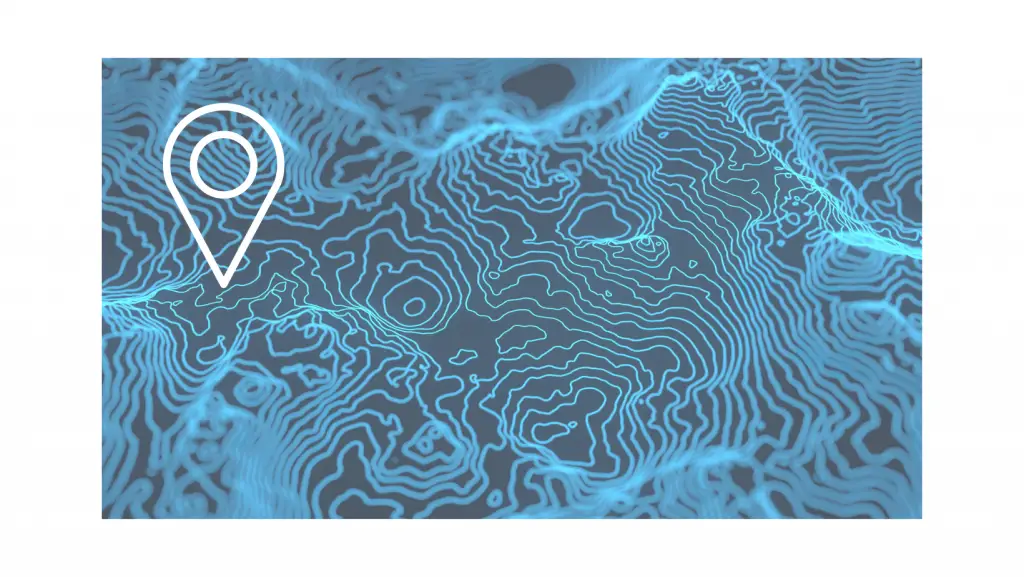
Global positioning was all the rage a generation ago, tying it into fish finders was another breakthrough in technology. The GPS on the Helix 9 locates your exact position within inches. When working with the mapping software, either from third-party vendors or from your own created and stored maps, the GPS can accurately locate any waypoint you’ve set for easy traveling across the water.
Working with the onboard radar, and the four frequency sonar, the Helix 9 can plot the shortest path to a location, and even avoid obstacles like larger boats, shallow water, or submerged rocks just below the surface.
When interfaced with smart technology trolling motors and boat guidance software, the Helix 9 can take you to a location while you sit back and relax.
Size of the Humminbird Helix 9

This isn’t a small device. Measuring 16.5x11x9.5 inches it is one of the larger fish finders on the consumer market. It doesn’t fit smaller watercraft very well. It is not a device for kayaks, canoes, or rubber rafts. A general rule is to install it on a boat over 16 feet long.
Weighing a hefty 9.05 pounds, you’re not likely going to pack it across the ice for winter fishing.
The footprint and heavier than average weight are necessary for all the included features.
Radar, four frequency sonar, GPS, Bluetooth, those are just a few of the features. The Helix 9’s internal GPS works with Humminbird Basemap software, offers AutoChart live, and uses dual spectrum CHRIP sonar across that wide range of frequencies from 200 kHz to 1.2 mHz.
Ethernet connections allow you to download the latest maps directly to your Helix 9, upgrade software, or share and retrieve your own custom-made maps from online shared angling sites.
HD television is the only technology not included in this avante-garde device.
Humminbird Helix 9 Alternatives
Why Buy the Humminbird Helix 9?
The Helix 9 CHIRP is a fantastic combo and is worth every penny. You can seamlessly integrate your Minn Kota and Cannon products right into its interface and set speeds, directions, everything you’d need.
The cost of this device moves it out of the range for many anglers. It is expensive, there is no other way to say it. If you’re on a tight budget, it is wise to look elsewhere for a new fish finder.
If you’re an experienced angler, have equal experience in fish finders, and want to move up in quality, you are the optimum consumer for this device.
The Humminbird Helix 9 is for serious anglers. Commercial fishermen use this device in offshore, deep-sea applications. Professional guides on the Great Lakes and in offshore ventures for Pacific salmon in the northwest, and eastern fishermen cruising the Atlantic fisheries all employ the Helix 9.
Guides on large reservoirs, like Wyoming’s Flaming Gorge, home of 40+ pound lake trout, enjoy the enhanced features of the Helix 9.
The pluses on this device are numerous. It begins with the high-definition nine-inch display. The images are incredibly clear, and with the Fish ID+ engaged, it will give you an audible warning when the parameters you set return an image of the type of fish you’re after.
The chart plotting and map-making features create your own unique cartography. The ability to upload high-quality maps of tens of thousands of lakes and offshore locations is priceless when venturing to a new fishing spot.
Add the vast array of communication technology with radar, sonar, Bluetooth, wireless, Ethernet, and dual SD cards and the Helix 9 is a veritable communication center.
Down imaging to depths of 3,500 feet (ca. 1,067 m), side imaging extending 200 feet (ca. 61 m) on both sides of the boat. Moreover, the ability to view imaging at high trolling speed provides in your face images of fish, rocks, sandy bottoms, pillars, and underwater vegetation. These images are so clear that experienced viewers can identify types of plants and species of fish right off the viewing screen.
If this is the type of technology you’re looking for in a fish finder, this is one of the best you can purchase. It offers professional quality in the consumer market.
The only drawback reported by users of the Helix 9 is its tendency to get cluttered images when trolling with downriggers, a situation you could rectify by moving the location of your downriggers in relation to the transducer.
The other complaint, that is also hailed as a valued feature, is the push-button interface. Many younger anglers prefer the quick scrolling capability of a touch screen and lament the slower push button menu.
Other anglers appreciate buttons that work in all conditions, where a wet touch screen can cause interface issues. Wearing gloves in cold conditions is also a plus.
Do your homework before you buy, but when you’re done, this is a great device.
For more guidance on choosing a fish finder, check out the pages below:

